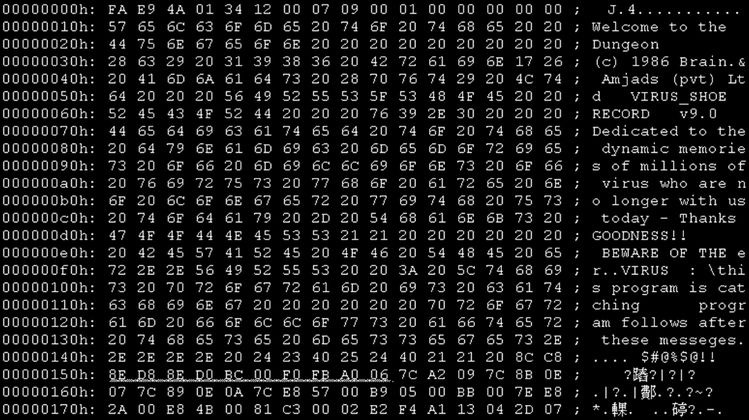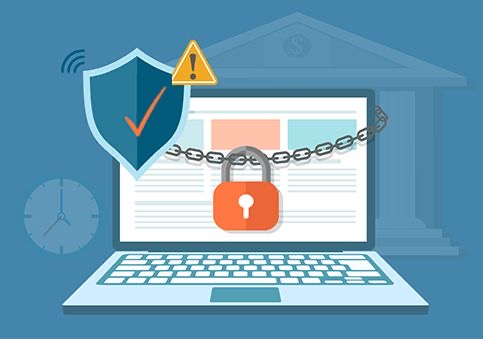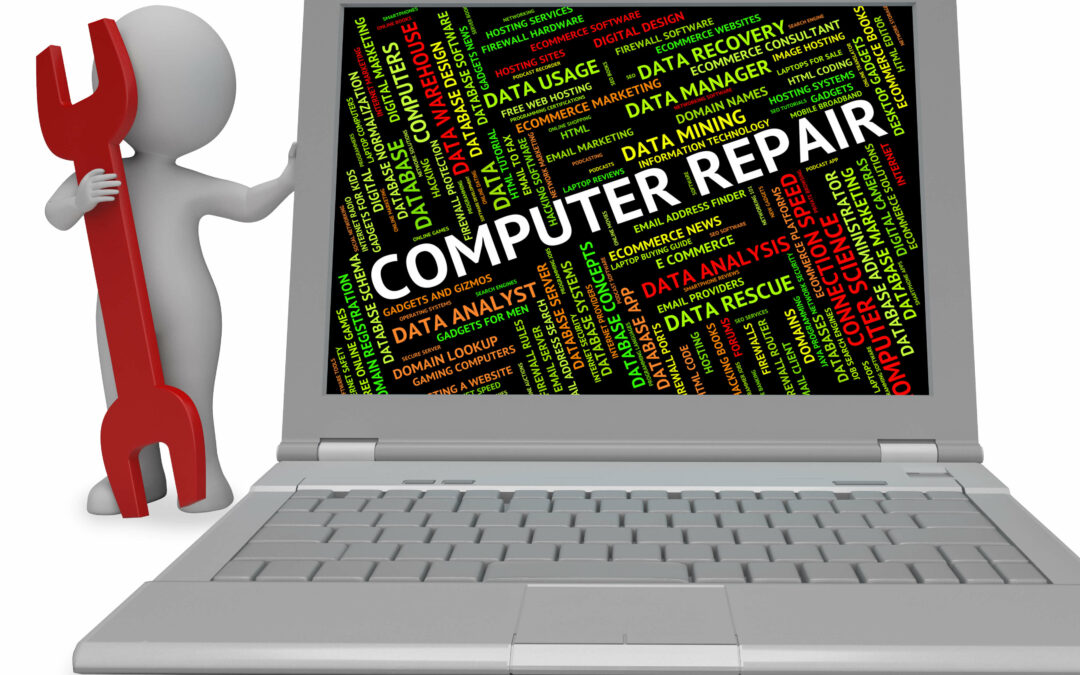Understanding the Threat Landscape
In today’s digital age, our dependence on computers and online systems is unparalleled. With the rise of technology and our increasing online footprint, threats in the virtual world have become as real and potent as those in the physical one. The cybersecurity landscape consists of hackers and cybercriminals who are continuously developing new techniques and tools to exploit vulnerabilities. The tangible boundaries between the physical and virtual worlds have blurred, leading to an interconnected web of data, information, and experiences. Understanding this threat landscape is the first step in securing our digital assets.
What are Computer Viruses?
Computer viruses are malicious code designed to replicate and spread across files and systems. These digital bugs attach to files and programs, corrupting them and often rendering them useless. Viruses can be transferred between devices via email attachments, flash drives, downloads, or even by visiting infected websites. Once inside a system, they can duplicate, move from file to file, and from one device to another, leaving a trail of devastation in their wake.
Malware: Beyond Just Viruses
Malware, short for malicious software, is the umbrella term for any software deliberately designed to harm or exploit devices, services, or networks. While viruses are a type of malware, the realm of malicious software extends far beyond them.
- Spyware covertly observes and collects user information without their consent. It can monitor user habits, record keystrokes, and gather confidential data.
- Ransomware locks users out of their devices or encrypts their data, demanding a ransom for its release. Recent years have seen an alarming increase in high-profile ransomware attacks, crippling organizations and demanding vast sums of money.
- Trojans are masqueraders. They appear harmless—sometimes even useful—but once executed, they can provide cybercriminals unauthorized access to victims’ systems.
- Worms are standalone malware programs that replicate themselves to spread to other computers, often exploiting network vulnerabilities.
With the growing variety and sophistication of threats, users must arm themselves with knowledge and implement robust security measures. Only through vigilance and proactive defense can we hope to navigate the treacherous waters of the digital age safely.
Fortifying Your Digital Defenses
The digital age presents a paradox. While it opens doors to unlimited knowledge, networking, and convenience, it also introduces risks. Just as one would secure their physical home against intruders, it’s imperative to fortify digital spaces against cyber threats. A comprehensive strategy ensures not just protection from current threats but also prepares one for future risks, some of which might be unforeseen. Let’s delve deeper into strengthening your digital fortress.
Invest in Reliable Antivirus Software
Top-tier antivirus software is your first line of defense. Repair Lounge San Marcos has a professional team to help with your Virus Protection Software and Installation. Such software continuously scans your computer for known threats, detects suspicious behavior, and quarantines or removes malware before it wreaks havoc.
- Real-time Protection: Top-tier antivirus software offers real-time protection, meaning they run in the background, constantly scanning files, applications, and downloads. The moment you access a potentially harmful file, the antivirus springs into action.
- Heuristic Analysis: Beyond just known threats, advanced antivirus solutions use heuristic analysis to detect new, unknown viruses or new variants of known viruses by studying their behavior. This means even if a threat is brand new, the suspicious behavior gets flagged.
- Regular Updates: Premium antivirus platforms are regularly updated. As new threats emerge, the software evolves, constantly learning, and adapting to protect users.
- Additional Features: Many advanced solutions now include additional tools such as password managers, VPNs, and even system optimization tools to ensure your computer runs smoothly.

Keep Your Software Updated
Updating software might seem tedious, especially when it interrupts what you’re doing. However, these updates are not just about adding new features:
Software developers constantly refine their code. When they find security holes or vulnerabilities, they fix them. Updates often contain these fixes, denying hackers the chance to exploit them. Developers are perpetually on the lookout for any inconsistencies, glitches, or flaws in their code that might pose a security risk. Once identified, they diligently work to rectify these vulnerabilities. When you update your software, you’re often incorporating these crucial fixes into your system. By doing so, you’re sealing off these vulnerable entry points, ensuring hackers and malicious entities cannot exploit them. These updates are a proactive measure, acting as a digital shield, fortifying your systems against cyber threats.
Updates often come with optimizations that make the software run more efficiently, reducing the chances of crashes or slowdowns. Updates often encapsulate these enhancements, leading to smoother software operation, minimizing system hitches, and reducing instances of crashes or slowdowns.
The world of technology is interconnected, where software often interacts with other software and various hardware components. With technology evolving, keeping software updated ensures compatibility with other software and hardware components, ensuring a seamless digital experience.
Many modern systems and applications offer the option of automatic updates. By enabling this feature, you ensure your software remains updated without the need for manual intervention, always staying a step ahead of cybercriminals.
The Power of Firewalls
Understanding the significance of a firewall requires a basic grasp of its functions and the pivotal role it plays:
- Digital Gatekeeper: At its core, a firewall serves as a gatekeeper for data. It determines which data packets are allowed to enter or leave a network, based on predefined security rules.
- Protection Against Unauthorized Access: Firewalls prevent unauthorized external users from accessing private data on a network. If a hacker tries to gain access, the firewall acts as a barrier, blocking the attempt.
- Filtering Traffic: Not all parts of the internet are safe. Firewalls can filter out traffic from suspicious sources or block users from accessing potentially harmful sites.
- Monitoring & Reporting: Many advanced firewalls not only block threats but also log them. This feature is crucial for businesses or advanced users who need to analyze traffic, detect patterns, or gather evidence of attempted breaches.
- Types of Firewalls: While the term ‘firewall’ might sound singular, there are different types, each serving a unique purpose. From packet-filtering firewalls, which examine packets of data for malicious content, to proxy firewalls that act as intermediaries, intercepting requests from one network and forwarding them to another, the right firewall setup can be customized based on individual needs.
Practicing Safe Digital Hygiene
In the ever-evolving digital age, navigating the internet and various online platforms requires a blend of awareness, caution, and proactive measures. Analogous to maintaining personal hygiene to protect our physical health, digital hygiene keeps our virtual lives safe. Here’s a deeper exploration into ensuring this safety, beginning with understanding threats and progressing to preventive measures.

Beware of Phishing Attempts
Phishing, a cunning form of cyber deception, mimics legitimate entities to lure unsuspecting victims into divulging personal information or unknowingly downloading malicious software. Here’s how to outsmart the phishers:
- Recognize the Signs: Phishing emails often contain generic greetings, spelling errors, and high-pressure language urging immediate action. Instead of “Dear Customer,” a genuine organization would address you by name.
- Check URLs Carefully: Hover over any links without clicking to view the URL. Be wary if they look suspicious or don’t match the company’s official website address. Often, phishers use slight misspellings or extra characters to deceive.
- Attachments and Downloads: Never download files from an email unless you’re expecting them. These could be Trojans or other forms of malware in disguise.
- Verify Sources: If an email or message claims to be from an organization but seems off, reach out to the entity directly using contact information from their official website, not from the email itself.
- Multi-factor Authentication: Whenever possible, enable multi-factor authentication for your accounts. Even if a phisher obtains your password, this additional layer of security can halt unauthorized access.
Secure Your Personal Networks
Our personal networks are gateways to our digital lives, often housing personal, financial, and other sensitive data. Ensuring their security is paramount:
- Strong, Unique Passwords: Avoid using easily guessable passwords like “123456” or “password.” A combination of upper and lowercase letters, numbers, and symbols enhances password strength. Also, refrain from using the same password across multiple accounts.
- Change Passwords Regularly: A habit of changing your network passwords every few months minimizes the risk of unauthorized access.
- Network Encryption: Ensure your Wi-Fi network is encrypted, preferably with WPA3 encryption, the latest and most secure protocol.
- Guest Networks: If guests need to access your Wi-Fi, provide them with a separate guest network. This limits access to your main network, where your devices and sensitive data reside.
- Virtual Private Networks (VPNs): A VPN is like a secure tunnel for your data. It encrypts information sent and received, masking your IP address and making your online activities private, away from prying eyes.
Regular Backups: Your Safety Net
In the unfortunate event of a cyber-attack, having updated backups is like owning a life preserver in choppy waters. Here’s why and how to back up effectively:
Determining the frequency of backups is pivotal and should be directly influenced by how often you generate or modify data. While some individuals or businesses might necessitate daily backups due to the dynamic nature of their data, others could find weekly or even monthly schedules to be adequate. Cloud storage services, including platforms like Google Drive, Dropbox, and OneDrive, offer a convenient solution. They not only provide easy access to stored data but also encompass robust security features that ensure the safety and integrity of your data.
However, for those who prefer tangible backup solutions, external hard drives or SSDs serve as a reliable alternative. Being physical devices, they remain insulated from online threats, but they are susceptible to physical damage or misplacement, emphasizing the importance of safeguarding them meticulously. To simplify the backup process and negate human errors, many modern systems and software offer features that automate backups. This guarantees that the most recent version of your data is always safeguarded. Nevertheless, a proactive approach dictates the importance of regular checks. It’s beneficial to periodically restore files from backups to validate not only the efficacy of the backup process but also to ensure the integrity and consistency of the stored data.
The Role of User Awareness
In the digital age, while software solutions are critical, the human element remains equally, if not more, important. The sophisticated nature of modern cyber threats often capitalizes on human error or oversight. Thus, fostering an environment of user awareness is paramount in curbing these risks. Let’s delve into how to develop and maintain this keen sense of digital awareness.
Educate Yourself Regularly
Knowledge is power, and in the context of cybersecurity, it can be the shield that guards against intrusions.
- Stay Abreast with Current Threats: Cyber threats mutate and evolve, much like viruses in the biological realm. By subscribing to cybersecurity news sources, attending webinars, or participating in online forums, you’re keeping yourself informed about the latest tactics employed by cybercriminals.
- Follow Cybersecurity Influencers: There are many professionals and experts in the cybersecurity field who share valuable insights on platforms like Twitter, LinkedIn, or personal blogs. By following them, you gain a front-row seat to the current discussions in the cybersecurity world.
- Engage in Online Courses: Platforms like Coursera, Udemy, and Khan Academy offer courses on cybersecurity, ranging from beginner to expert levels. Periodic participation can sharpen your knowledge and response tactics.
- Stay Updated on Software News: Often, software companies will release updates in response to newfound threats. By staying updated on these patches, you can ensure you apply crucial security fixes promptly.
Implement Safe Browsing Habits
Browsing the internet is a routine activity, but without safe practices, it can be akin to walking through a minefield blindfolded.
- HTTPS is Your Friend: Before entering personal or financial information, always ensure the website’s URL begins with “HTTPS” and not just “HTTP”. The ‘S’ indicates encryption, ensuring data transferred between your browser and the website is secure.
- Browser Extensions: Tools like Web of Trust (WOT) or the HTTPS Everywhere extension can alert you when you’re about to visit potentially harmful websites, and they ensure you connect using a secure protocol when available.
- Avoid Clickbait: Sensational headlines or too-good-to-be-true offers are often bait to lure you into malicious sites. Exercise caution and discretion.
- Downloads: Always download software or files from reputable sources. Avoid “cracked” versions of paid software, as they often come bundled with malware.
- Private Browsing: Using private or incognito modes on browsers can prevent the storage of browsing history, cookies, and other personal data, adding an extra layer of privacy.
Your Path to a Malware-Free Experience
Successfully safeguarding your digital environment isn’t just about erecting walls; it’s also about the paths you tread.
- Blend Tools with Awareness: While software tools act as sentinels, guarding against known threats, your awareness prevents inadvertent breaches from unknown or unforeseen dangers.
- Regular System Audits: Periodically review the software and applications on your computer. Remove outdated or seldom-used programs, as they can be potential vulnerabilities.
- Password Hygiene: Regularly update passwords and avoid using easily guessable ones. Password managers can be handy tools for generating and storing complex passwords for different sites.
- Engage in Community Discussions: Online forums and communities can be treasure troves of information. Sharing experiences and learning from others can shed light on emerging threats and effective countermeasures.
- Be Skeptical: A healthy dose of skepticism can be your best defense. Question the legitimacy of unexpected emails, be cautious about clicking on promotional offers, and always verify before sharing personal or sensitive information.
Repair Lounge San Marcos Computer Repair and Virus Protection services offer cybersecurity in the modern age which is a dynamic dance between software solutions and user practices. While tools and software can shield you from many threats, your behaviors, habits, and awareness are the final line of defense. In this intertwined mesh of human and machine, the journey toward a safer digital experience is paved with continuous learning, vigilance, and proactive action.







